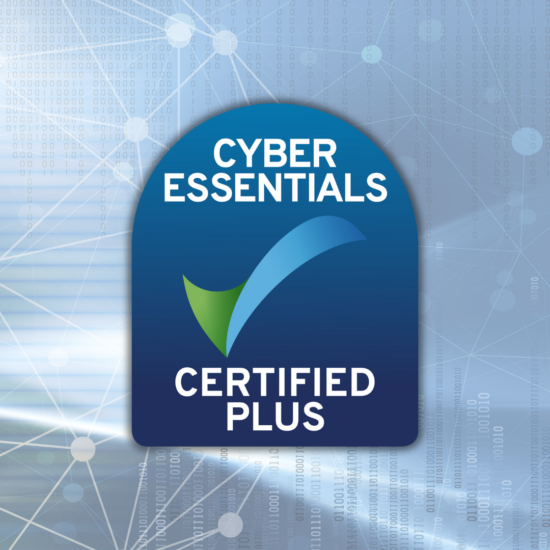DLRC Achieves Cyber Essentials Plus Certification
Published Apr 11, 2025
Published 27th June 2024

Under the EU Clinical Trials Regulation (CTR), the CTIS system is used for the upload of clinical trial related documentation. This system, which allows for submissions of all documents to be done through one portal and creates one place for all EU countries to respond, can streamline the Clinical Trial Application (CTA) submission process. However, it also causes issues in some of the more nuanced submissions. One of these issues was combatted in Version 6.4 of the CTR Q&A (February 2023), providing a workaround for when a Sponsor is not the product owner (PO) of an Investigational Medicinal Product (IMP) in a study and, therefore, does not have access to Quality Information on the IMP to provide with their submission. Further clarifications around these scenarios were then released with v6.8 of the CTR Q&A (March 2024) and are discussed in this article, with information on how each scenario needs to be handled by the POs and sponsors.
QIMPD-only submissions are a workaround developed to allow for the PO to keep manufacturing information confidential from the Sponsor of the clinical study in cases where cross-reference to another CTR study is not an option. This approach is, however, a cooperative approach with mutual responsibility, and holds an additional administrative burden on the Sponsor and the PO. When this issue is first seen and raised, communication with the PO must be started as the Sponsor and PO now need to work together to submit the two packages in parallel (the PO submits an application for Part I only and includes the QIMPD in CTIS). In addition, contractual agreements should be in place to define responsibilities and sharing of information.
Full cooperation between PO and Sponsor is required when using this approach. In particular, this is due to the recommendation that both submissions are not more than 24 hours apart, but also to ensure any other necessary documents are shared (QP declarations, MIAs), and to communicate when substantial modifications to the QIMPD occur and require a modification to be submitted in the sponsor trial. It should be clear in the cover letter of the sponsor trial where information/ documentation can be found (labelling should be in the sponsor trial submission), and reference should be made to the EU CT number of the QIMPD-only submission. Also, the Letter of Authorisation should be uploaded in the ‘QIMPD’ section of the sponsor trial.
The separation of the two submissions is not only for the confidentiality of the text in the QIMPD but also for when/if RFIs are received from the Health Authorities. By having separate submissions, the RFIs are sent solely to the PO for any QIMPD questions, and likewise, responses are not seen by the Sponsor. It is, therefore, essential that the RMS and MSCs in both submissions are the same. This is also the reason why a brand new parallel Q-IMPD submission must be done with each study, to allow for new questions to come from the HAs each time. This would not be possible if studies continued to refer to the same QIMPD-only submission. However, a recent EMA talk confirmed that this was being discussed as an option due to the additional administrative burden required with these submissions.
Due to the timelines surrounding the submission of trials transitioning from the EU Clinical Trial Directive (CTD) to the EU CTR, and the changes made to help expedite these submissions, if a parallel QIMPD-only submission is required it does not have to occur at the transition step. The QIMPD-only submission, in these cases, should be done together with the first substantial modification of after the transition approval. Allowing this not only eliminates the potential delays with a transition due to the added communication with the PO required, but it also allows for more time for the PO to initiate other studies themselves using this QIMPD under the CTR, which then allows the Sponsor to cross-refer, a much easier route with minimal additional collaboration required.
Studies which cross-refer to another CTR study’s QIMPD have an advantage when it comes to modifications. If there is a substantial modification (SM) required to the QIMPD in the ‘mother trial’, the ‘daughter trial’ does not require a parallel submission. However, a substantial modification to QIMPDs in QIMPD-only submissions require an additional level of admin.
When an SM is required to a QIMPD, the PO should withdraw the initial QIMPD-only application and re-submit the modified documentation to all relevant MSCs. This process ensures existing information from the initial application is reused, and facilitates tracking through EU CT resubmission numbers (-00, -01, -02 etc.). These numbers can then be referenced in the corresponding application in the sponsor trial. The sponsor trial will also hold the other documents required when submitting a modification (cover letter, a brief overview of changes etc.).
If local End of Trials (EoTs) have occurred in some member states prior to a modification, the resubmission is only required for the currently ongoing MSCs. However, the RMS should always be included, even if EoT has occurred there, as the RMS for both submissions must always be the same.
Similarly to SMs, when adding a new MS, the QIMPD-only submission should be withdrawn and resubmitted to the RMS and the new MS. This should be done in parallel to the Sponsor’s ‘addition of a member state’ submission.
The QIMPD-only submission is used to link a full IMPD for IMPs with a clinical trial where those IMPs are being used. However, there may be a scenario where a substance owner (SO) submitted the QIMPD for the drug substance part as “QIMPD-only” and the remaining drug product section is submitted within the sponsor trial submission. This special case is only possible if the applicable product legislation allows (e.g. where a drug substance master file is allowed) and requires full cooperation between the SO and sponsor. A split application like this is not allowed for biological medicinal products or ATMPs.
In conclusion, the development of the QIMPD-only submission workaround has allowed for confidential information to remain confidential across studies and sponsors. It also creates a space for MSCs to be able to send Requests for Information (RFIs) to the POs (and SOs) only. However, this approach also comes with an additional administrative and communicative burden. Therefore, it is essential that Sponsors highlight the need for these types of submissions early. This ensures alignment with the POs and enables submissions to occur in parallel for smooth and quick approvals.
At DLRC we have extensive experience working with the CTR and within the CTIS system. We can help support the submission strategy, lead on relevant conversations, and perform the submissions. We will ensure your study is submitted efficiently within the terms of the CTR and, importantly, avoid confidential information from being shared. To discuss how DLRC’s regulatory experts can assist you in these submissions, contact us

Published Apr 11, 2025

Published Mar 27, 2025

Published Mar 25, 2025

Published Mar 06, 2025

Published Feb 26, 2025

Published Feb 25, 2025

Published Feb 03, 2025

Published Feb 03, 2025

Published Jan 30, 2025